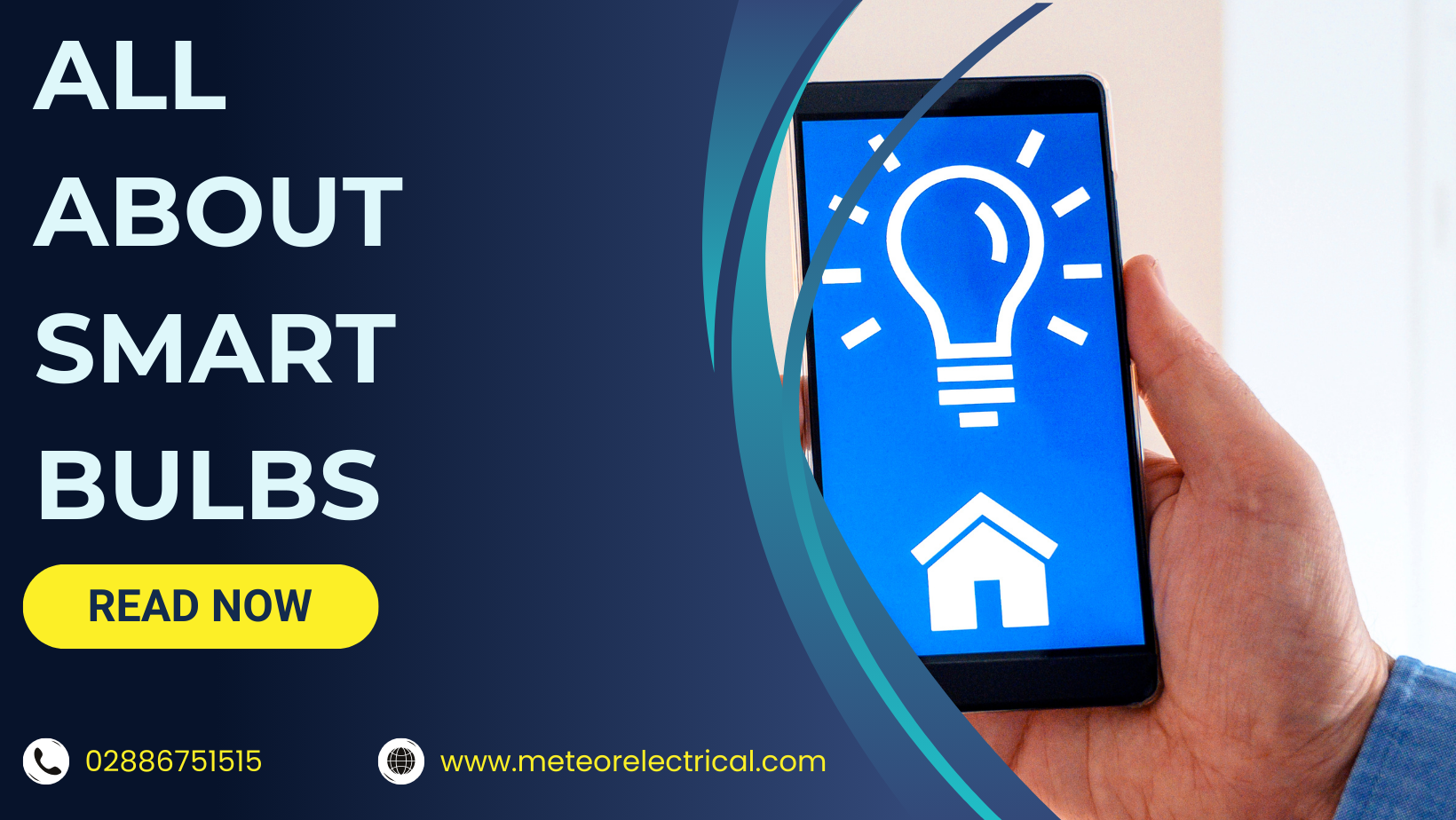Smart Bulbs
Household lighting is constantly evolving to bring homeowners more energy efficient options. Gone are the days of incandescent lighting that put a strain on your energy bills. These types of traditional lighting don’t perform as well as modern lighting, and they also drive up your energy bills.
Modern energy efficient lighting produces high-quality illumination that is extremely cost-effective in the long run. Smart bulbs are one such solution, and they offer much better control over your lighting than traditional bulbs.
If you want to learn more about these luminaries, here is everything you need to know about smart bulbs.
What Are Smart Bulbs?
Before we look at all the different ways smart bulbs can improve your household lighting design, it is important to understand what these appliances are and how they work. Learning about this will help you use your smart bulbs to their full potential.
Smart bulbs or smart lighting are fixtures that automatically interact and sense their environment. These bulbs are a significant part of energy efficient lighting as it helps you save on energy costs in the long run. These light bulbs use smart technology to increase their functionality and scope.
With smart technology, you can do so much more than switch your light on/off. These bulbs use the surrounding data to make efficient lighting choices. Most smart bulbs also work alongside other smart devices to help you create a fully automated home.
Unlike traditional light bulbs, which require manual control, smart bulbs can be operated with a smartphone, remotely, or through a voice activation system. Wireless connectivity is the main power source that activates smart light bulbs.
Your wireless connectivity allows hands-free control over lighting and provides automated settings from the light bulb. You can also use smart bulbs in conjunction with a virtual home assistant for even better control over your lighting.
When it comes to wireless network connectivity, one of the most common options is a Wi-Fi connection. However, you can also use Bluetooth and other modes of wireless connectivity with your smart bulbs.
As mentioned before, there are several great features of using smart bulbs. You can use the smart control to dim your lighting remotely or change its warmth/colour to create a specific environment in a room.
You can also program lighting according to a daily schedule so you will have the perfect lighting without any manual operation. With smart abilities, you have precise control over how much energy your lighting bulb consumes.
You can easily cut down on unnecessary energy waste with remote control over your lighting. Using several smart bulbs to create a group and control them remotely is also possible.
Other smart lighting alternatives use motion and lighting sensors which will automatically turn on/off based on the amount of detected light or the presence of movement or people in a given space.
With these innovative yet simple features, you can greatly reduce the energy consumption that comes from leaving lights turned on when the house is not occupied.

An Innovative Choice
Individual smart light bulbs are a great way to start creating a smart home. These smart bulbs can be connected to existing sockets, after which you can connect them to your home’s Wi-Fi network. This feature lets homeowners control smart light bulbs from a smartphone or tablet app.
You can control multiple smart light bulbs with your app. Some apps can help you set a schedule; therefore, if you have these bulbs in multiple rooms, you can set different control depending on each light.
For example, if you have smart light bulbs in the bedroom and the living room, you can set the living room bulbs to stay operational for a long time while the bedroom bulbs can only operate at night.
Most smart light bulbs use LEDs which are highly energy efficient. With LED bulbs, you can save money on energy costs while enjoying high functionality. Different types of smart bulbs offer several other features, including mood-based lighting, adjustable brightness, and much more.
For high-grade smart lights, visit Meteor Electrical. At Meteor, you can browse through our wide range of smart lighting that guarantees comfort and convenience.
Pair With Companion Smart Device
If you already own a home assistant device, you can pair your smart bulbs with it for even more access and convenience. Home assistants take your smart bulbs to the next level and offer next-level capabilities.
With an Alexa or Google device, you can simply send a voice command and have all your lights turned on or off. This process is much faster than opening up an app on your smartphone. Depending on your Wi-Fi connection speed, this action can be done much more quickly.
Organisation also becomes much easier with a home assistant device. A smart assistant hub allows you to set room names for your light settings.
For example, if you ask your home assistant to turn on the preset living room lights, you will immediately get your desired brightness settings. You can also combine your smart bulbs and home assistant with other smart devices for better home automation and customisation.
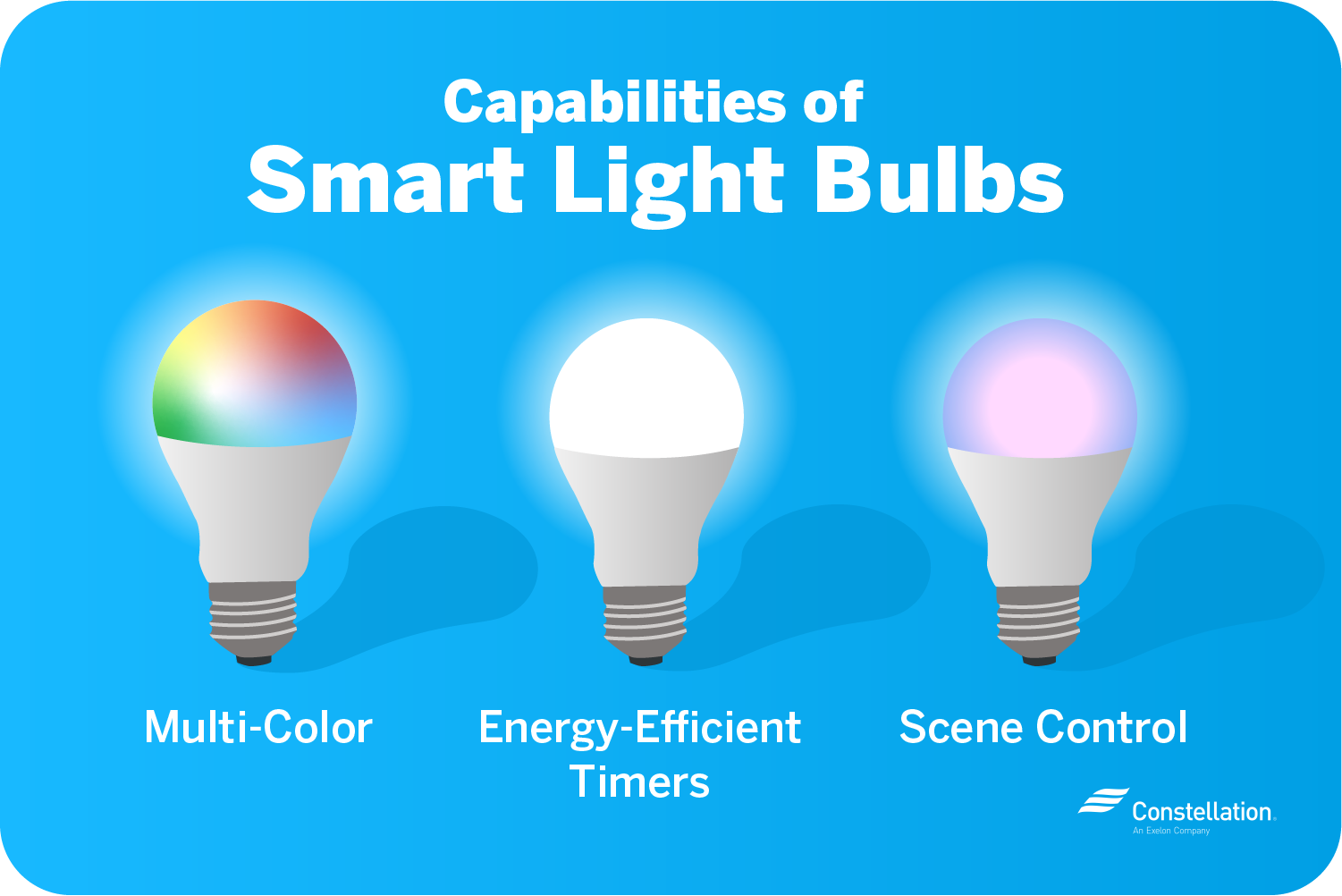
How Do Smart Bulbs Work?
Even though smart bulbs look just like traditional lighting, these small devices contain a powerful mechanism that allows you better control and functionality over your illumination.
In general, smart bulbs connect and receive commands wirelessly from a central power source. This is an important connection to remember when setting up your smart light bulbs. The central power source for smart bulbs can be either a wireless network connection or a virtual home assistant platform.
The most common type of smart bulb is wifi-enabled, making it easier for homeowners to set up their lighting and start using it. However, apart from wifi, you can use several other network protocols to use your smart lighting.
There are some smart bulbs that include a separate dedicated smart hub to connect with the wireless network. This hub device acts as a gateway between your phone and the smart light bulb. The hub processes the signals sent from your remote device and forwards instructions to the smart light bulb.
Apart from these luminaires, these are also a separate category of smart light bulbs that do not completely rely on wireless communications for all their smart capabilities. These lamps are intuitive and adaptive as they have sensors that detect changes in their environment.
For example, some smart bulbs contain motion or daylight sensors that automatically switch on/off without the help of wireless network connectivity.
Regardless of the type of smart bulb you choose, almost all of these devices provide advanced controls that are not available in traditional lighting.
What Is Energy Efficient Lighting And Why Is It Important?
In recent years, there has been a significant push toward energy efficient lighting solutions. So what are energy efficient lights? Energy efficient luminaires reduce the energy usage of the light bulb without affecting the final lumen output or brightness.
An energy efficient light fixture consumes less energy to perform the same function as a traditional lamp. These qualities form the basis of energy efficient lighting. Energy efficient lighting does not rely on wattage to deliver good results.
It is important to understand that energy consumption does not correlate to the quality of brightness. Energy efficient lighting can help you save energy while providing high-quality illumination.
Smart bulbs are a major part of energy efficient lighting solutions. These bulbs are so efficient because they use an LED chip to provide illumination.
LED bulbs perform far better than any other lamp, making them the best choice for any lighting design. Energy efficient lighting also has better structural integrity than other lighting. These luminaries have better circuitry than conventional lights, stopping electricity from going to waste.
These lights are also designed to last a lot longer than traditional lighting. Due to this quality, you won’t have to spend much money trying to replace your light bulbs often.
Swapping Traditional Bulbs With Smart Bulbs
Some energy efficient lighting has high upfront costs, which might make consumers apprehensive about switching to energy efficient solutions; however, these lights are highly beneficial in the long run as they produce energy savings.
Lighting is an important basic requirement of any building, whether it's residential or commercial. Lighting is a significant part of our daily life and impacts our day-to-day activities. Since lighting is so important, it also consumes a significant portion of energy.
Many homeowners introduce energy efficient lighting in their households to reduce energy bills; however, you can also implement such lighting in a larger application. Energy efficient lighting in commercial buildings and public luminaries will greatly impact energy savings and carbon emissions.
Several government legislatures are implementing the use energy efficient lighting on a larger scale to cut back on energy consumption and reduce environmental harm. These legislatures are urging manufacturers to scale back on the production of inefficient lighting.
In fact, the UK plans to phase out all inefficient lighting by 2023. Some governments are also incentivizing manufacturers to produce more efficient light solutions. The awareness of energy efficient lighting is also increasing, and many people are seeking out energy efficient bulbs instead of their traditional counterparts.
Due to this high demand, you can expect the energy efficient light industry to reach £324 billion by 2027. With high demand, there will be many more economical and efficient light products to choose from in the future.
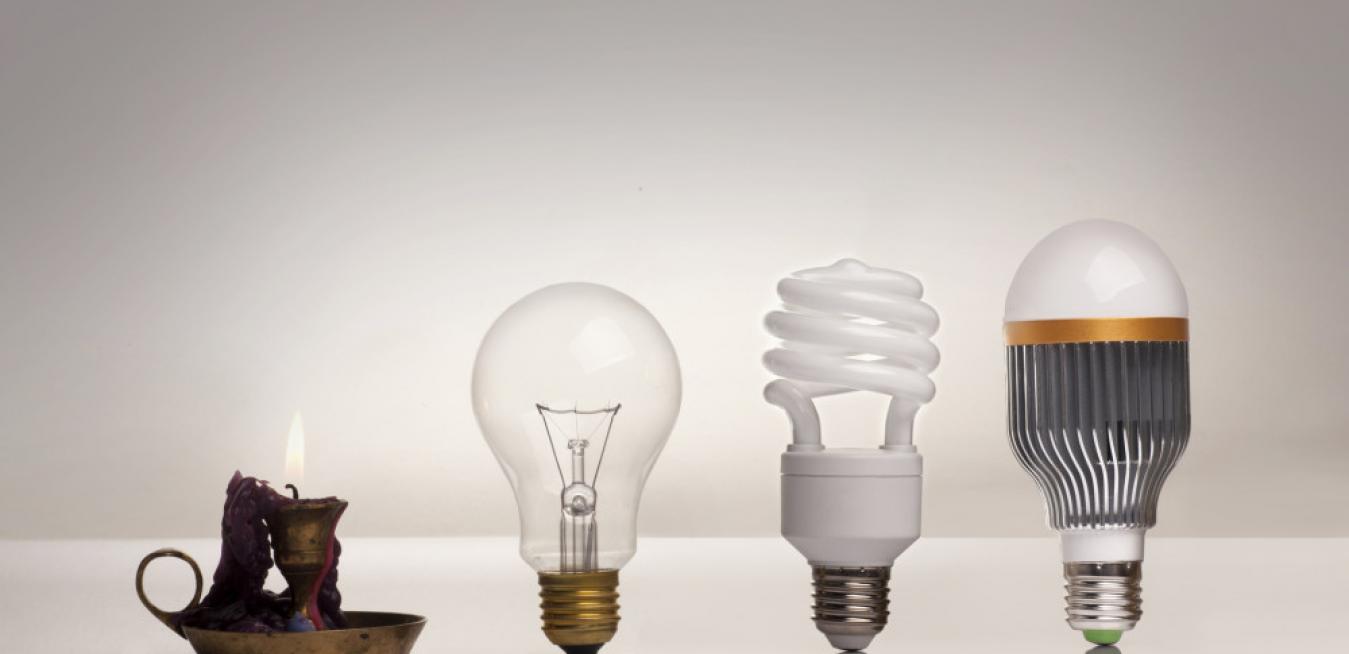
What Are The Alternative Types Of Smart Bulbs?
Most smart bulbs look like a standard light bulb with smart capabilities; however, there are several a few other choices when it comes to smart bulbs that are just as efficient as the standard model.
These lights may look different than a standard light, but they work just as well. Here are two of the most common alternative versions of smart bulbs.
Smart Light Strips
If you want to create directional lighting or you want luminaries to highlight certain objects in a building, use smart light strips. Strip lighting is a common type of luminaire found in many buildings, and now you can find these lamps with smart capabilities.
Smart light strips use several bulbs to light up larger spaces. This type of lighting works best in smaller enclosed spaces such as on the staircase, around your TV, or under kitchen areas.
Smart strip lighting comes in multiple colour options, and you can choose from simple white or other more eclectic colour schemes. Due to the various colour options, light strips are also commonly used for mood lighting.
It is important to note that light strips don’t provide high-intensity brightness; they are mainly used to highlight the area they are placed in.
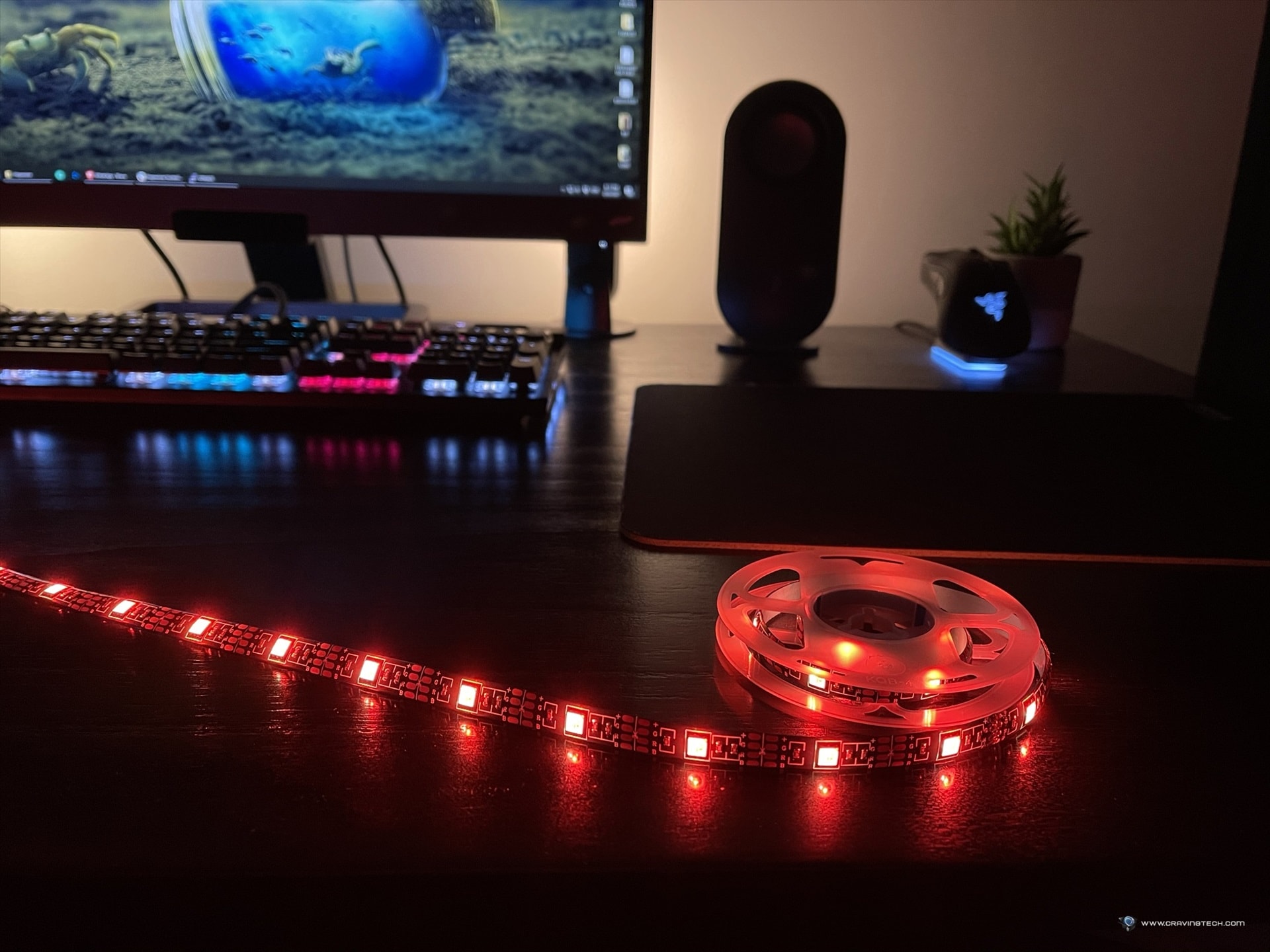
Smart Enclosed Lights
Recessed lighting is an extremely popular lamp feature found in many buildings. From households to office buildings, recessed lighting is a great way to create an atmospheric look.
When it comes to energy efficiency, you can install smart enclosed lights to get the most out of an ordinary recessed luminaire.
Smart enclosed lighting is specially manufactured to fit recessed or enclosed lighting fixtures. These lights work well with lamp appliances such as a desk or floor lamp. Enclosed are ideal for such fixtures because of the heat component.
Bulbs in enclosed lighting release heat which can damage your equipment; it is important that you get enclosed light bulbs to ensure there is no damage to your light fixture. This will ensure the longevity of your lamp, and you won’t have to spend as much on maintenance and replacement costs.
Which Wireless Network Can You Use With Smart Bulbs?
As mentioned before, wireless network connectivity is crucial for smart bulbs. Even though a wifi network is commonly used with smart lighting, several network protocols are available that are compatible with smart bulbs.
Here are some of the different network protocols you can use and how they benefit your smart bulbs.
Wi-Fi Network
Since wifi is readily available, many smart bulbs are designed to be compatible with this network. To get started with your smart lighting, you only need your home’s regular Wi-Fi network.
The smart light uses your Wi-Fi signal and router as a method of communication. These systems are essential for the function of your smart lighting. If you ask your smartphone to turn off the lights, it sends a signal to your home’s wireless connection to carry out the command.
There are several benefits of using a Wi-Fi network. Most household Wi-Fi provides strong coverage. Therefore, you will suffer fewer connectivity issues with your light controls.
Household Wi-Fis are also equipped to handle multiple devices at the same time, which means you don’t need to purchase an extra hub. Even though this network connection is extremely reliable, there is one drawback of using Wi-Fi.
If your Wi-Fi is down, you will be unable to control your lighting. Despite this drawback, if you experience no outages with your Wi-Fi, you will have a seamless connection with your smart lighting.

Bluetooth
Modern smart bulbs often use Bluetooth technology instead of Wi-Fi. Bluetooth is another network that does not require a hub, as your smartphone directly connects with the bulb to provide control. However, there are certain drawbacks to using a Bluetooth network.
This network offers a very low bandwidth range which means you can only communicate with very few light bulbs at once. For instance, if you have smart bulbs throughout your house, you will only be able to control bulbs in rooms or sections of the house at once.
Bluetooth also doesn’t allow you to group all your light bulbs; therefore, you can’t switch off all the lights in a room simultaneously.

Zigbee
Apart from smart lighting, you can also connect smart speakers with a Zigbee network giving you more ways to create a connected home.
Zigbee is a self-forming mesh network which means that when you turn the power on a Zigbee compatible device, it will automatically reach out and connect with other Zigbee-connected devices in the range.
With the Zigbee network, each device acts as a mini-hub to transport your messages from the app to other appliances. This process helps improve the range of the network and the connected devices.
Zigbee networks also bear some similarities to Wi-Fi in that they operate on a 2.4 GHz radio frequency, but there is a small chance for interference between the two networks. However, this occurrence is quite rare, and you do not need a separate hub.

Z-Wave
Z-Wave is another network system that works just like Zigbee. This system is mainly used for smart sensor devices. Z-wave requires its own hub to operate, and it functions separately from your Wi-Fi network.
Z-wave uses an 800-900 Mhz range which; means there will be no inference between your Wi-Fi and this protocol.
If you have any other devices in your household that also use Z-wave, you can connect them together and increase their range. However, Z-wave is very rarely used with smart lights.

What Are The Benefits Of Smart Bulbs?
Lighting is an incredible part of your home, which is why when you choose smart lighting, you should look for lights that provide convenience and comfort. Here are all the important benefits of smart lights.
Comfort And Convenience
Smart products, including smart bulbs, are well-known for allowing a higher level of convenience. With these lights, you have improved control and better functionality of your home’s lighting systems.
Most smart lights can be easily set up with your phone, so you can control your lights even when you are away from your home. Other conveniences include setting up a schedule for your lights depending on your needs.
You can schedule your lights to turn on at sunset and turn off at sunrise. This removes the need for you to get up and turn off all the lights in the morning. Some smart light bulbs also allow voice control, meaning you simply utter a command, and your lighting will turn on/off.
Smart bulbs with motion sensors will automatically turn on when they detect movement. Such light bulbs work well in areas get don’t get frequent use.
For example, you can install smart bulbs with motion sensors on the staircase so that your path will be automatically illuminated when you walk/down the stairs. With the motion sensor, you can avoid wasting light energy and save on operational costs.
Alternative models of motion sensor smart bulbs turn lighting on/off based on the level of daylight. This feature is another way of ensuring better control over your lighting.
Energy Efficiency And Cost-Effectiveness
One of the major reasons why many people should invest in smart bulbs is their energy efficiency and cost-effectiveness. Smart bulbs are equipped with several helpful features, with advanced controls being one of the best components.
With increased control over your light output, you can significantly reduce your energy consumption. If you leave your light turned on, a smart bulb connected to an app will send you an alert.
Once you receive the alert, you can simply turn the light off from the app instead of going back home. As mentioned earlier, almost all smart lighting products are made from LED bulbs to ensure efficient energy use.
LED bulbs are 75% more efficient than conventional light bulbs, which means you will see major savings on your energy bills in the long run.
LEDs also have a longer lifespan compared to incandescent light bulbs; therefore, you will also save money on maintenance and replacement costs.
The exact amount you would save from smart lights depends on the manual light bulbs you need and how long they remain operational. Despite these factors, every homeowner will see some level of savings by installing smart lights.
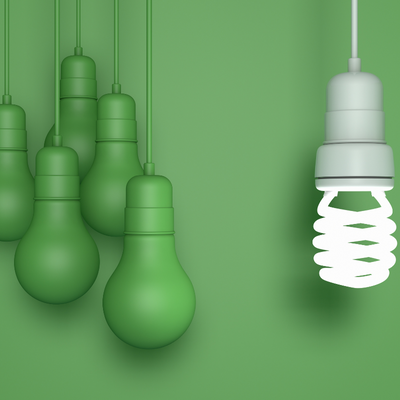
Customisation Through Innovative Technology
Smart bulbs represent a modern way of lighting, and these highly innovative light bulbs come with several customisable features that are not available in standard lighting.
Most standard light bulbs only offer one colour; either a warm white or yellow shade or a sharp white blue shade. With such a limited range of colours available, it is difficult to create a customised lighting design.
These conventional bulbs often fall somewhere in the middle of the Kelvin colour temperature scale. However, with smart bulbs, you can explore a wide array of colour temperatures.
If you prefer standard colours, you can still get a regular white colour, or you can choose from various shades of white depending on your lighting needs. Some smart bulbs offer a setting called “white ambiance” that changes the colour temperature depending on your needs.
For instance, you can choose a warmer white temperature when you want to create a relaxing atmosphere, or you can opt for a cooler white when you can get intense illumination.
To access the completely RGB spectrum lighting, you will need to purchase the more expensive option of smart lighting. These higher-end smart bulbs offer a full range of colour customisation.
You can choose from potentially 16 million colour combinations and codes to find the ideal choice. RGB lights have several benefits, as you can use them in any kind of modern lighting setup. You can create mood lighting or set up a comfortable atmosphere for your home. There are endless customisation options with smart bulbs.
Wellness And Health Benefits
Artificial lighting can have a major impact on your health; therefore, it is important to invest in light bulbs that positively impact you. Some smart bulbs also have the rare benefit of positively impacting your health.
Blue light is well-known as a disruptor of our natural circadian rhythms. Many manufacturers are developing smart lights with hues that do not disrupt your health and wellness.
You can also program your smart lighting to increase in intensity to avoid experiencing jarring light levels gradually.
Secure Lighting Option
Smart bulbs also ensure the safety and security of your household. You can schedule your lights to turn on at specific times when you are away from home. This will give the appearance that someone is at home, keeping intruders away.
Smart lights are also a great way to reduce accidents from the darkness. With motion-sensing lights, the bulbs will automatically turn on to help you illuminate your path.
You can also experience these benefits with smart outdoor lighting; the sensor will automatically trigger the outdoor light to turn on without the need for any wiring.
Longer Lifespan
Having to replace your light bulbs frequently is a major hassle. A shorter lifespan also means more maintenance and replacement costs. To avoid this issue, you must invest in energy saving smart bulbs.
Smart bulbs such as LEDs have a significantly longer lifespan than any other luminaire available. LED light bulbs last up to 10 times longer than compact fluorescent light bulbs. LED bulbs last 40 times longer than traditional incandescent bulbs.
Bulbs with a longer lifespan do not need to be replaced often, which means you save more money on light bulb expenditures in the long run.
Innovative Features
Smart bulbs contain several innovative and practical features that set them apart from traditional lighting. One of the most helpful smart bulbs is the ability to set schedules.
You can set specific timings according to your daily schedules and lighting habits to only use light energy when needed. Simply log into the smart bulb app to create your perfect schedule. If you have multiple smart bulbs, you can set specific schedules for different rooms.
How Do You Install Smart Bulbs?
Even though smart bulbs are highly innovative, installing them is very simple and uncomplicated. For these light bulbs, you don’t need any special fittings, base components, or wiring. The smart bulb installation also does not require any extra wattage or power.
To start using your smart luminaries, all you need to do is replace your standard light bulbs. However, there is one important factor you must consider for installation - the strength of your Wi-Fi connection.
If you have a low-grade router or a large home, your bulb will suffer some connectivity issues. If you add multiple bulbs to such a network, there will be more strain on your connection. When smart bulbs connect with a wireless network, they take up bandwidth.
A standard home has multiple devices already connected to your network. For example, you might have your smartphone and a few laptops connected to your Wi-Fi. By adding additional light bulbs (more than 10), you increase the strain on your network system.
If you run into such a problem, it is beneficial to install an economical router that provides free internet packages. On the hand, you can upgrade your router system to handle multiple devices.
Alternatively, you can upgrade your router system to handle multiple devices. If you don’t have multiple devices but live in a large home, consider adding a Wi-Fi extender to boost your network’s capability and successfully use your smart bulbs.
How Many Smart Bulbs Should You Install?
If you are starting with smart bulbs, you might be tempted to replace every single light fitting in your home. However, you don’t need to do this to create a smart home. It is recommended that you only swap out frequently used light bulbs with smart lighting.
You can also replace bulbs that are constantly being switched on or off. If there is an area in your household that doesn’t need frequent lighting, it is best not to add smart lighting here. However, if your budget permits, you can also add smart lighting in the outdoor areas of your homes.
If you are considering using smart outdoor lighting, look for bulbs that are specially designed to withstand outdoor weather elements. Also, consider the use of a motion sensor to increase the capabilities of your smart outdoor lighting.
Setting Up Smart Bulbs
Once you purchase your smart bulb, you should go through the instruction manual provided. Most smart bulb manufacturers provide instructions on how to set up these lights and pair them with your network.
The first step to installing smart bulbs includes putting them in pairing mode. Once this step is done, you should download the corresponding app on your smartphone or tablet to complete the pairing possess and start controlling your light.
If you want to install multiple smart bulbs, it is recommended that you assign a name to each of them. Also, you will have to carry out the pairing process for each individual lamp to start controlling them.
If one of your smart bulbs loses its connection to the router or hub, it might not respond to your instructions. If this situation occurs, you must pair the device again. Besides the corresponding app, you can also connect your smart bulbs to another smart device of your choice.
One of the most popular companion devices includes a virtual home assistant. Many smart bulbs are compatible with Amazon Alexa, Google Home, or Apple Homekit. Make sure to check the compatibility with your home assistant device before making a purchase.
What Are The Best Smart Bulbs Available?
Due to the rising demand for energy efficient lighting, there are several great smart bulbs to choose from. However, because of the sheer volume of choices, it can be difficult to know which smart bulb works best for you. If you are looking for high-quality smart plugs, visit Meteor Electrical.
At Meteor Electrical, browse through our Aurora lighting range to find some of the best smart lights on the market. Aurora lighting is a global manufacturer of luminaries, and their products are high-quality and long-lasting. Here are some of the best smart lights Aurora has to offer.
-
Aurora 8W GLS Dimmable Smart Bulb
If you are looking for a versatile smart bulb, you should go for the 8W dimmable smart bulb from Aurora. This smart bulb uses Bluetooth connectivity, so you don’t need a smart hub to power your light.
The Aurora smart bulb is simple and cost-effective, and you will start seeing benefits after the first use.
With this lamp, you get a remote control to access your lighting easily. This bulb offers 6 RGB colours, and it is made from LED, which means a longer lifespan of 25,000 hours. These 8W lamps provide 160 degrees of beam angle, and you can have 5 pre-programmed scenes.
-
AOne Smart Kit 4x5W Dimmable LED Smart Bulb
If you are looking for a smart bulb kit, Aurora offers the AOne smart kit with four 5W dimmable LED smart lights. These lights have a colour temperature range between 2700-5000K, and they offer dimming options between 5-100%.
For those looking to start their smart home journey, this is the perfect kit to start with. This kit also works with Bluetooth connectivity, and you don’t need any external devices to get started.
To start using these lamps, simply connect the light fittings, turn on the provided remote, and begin controlling the smart lights immediately. Apart from Bluetooth, you can also use the Aurora BLE app to control your lighting.
-
AOne Smart Kit 5m RGBCX LED Smart Light Strip
If you want to opt for strip lighting instead of a regular light bulb, Aurora has an option for you. The AOne smart kit strip lighting is another great entry-level smart home technology that does not require a hub.
As with other Aurora lighting, you get a handheld remote to control your light settings. This kit comes with 5 meters of strip lights which can be cut at every 167 mm.
These lights can recall 6 RGB colours and come with a colour temperature range between 2700-5000K. This kit also comes with 10 mounting clips for quicker installation and added safety.
Final Takeaway
With more and more people demanding energy efficient light products, smart bulbs are a great option. These highly innovative light solutions provide excellent illumination without increasing energy costs. Make sure to look through various compatibility options to choose your best smart bulb.

